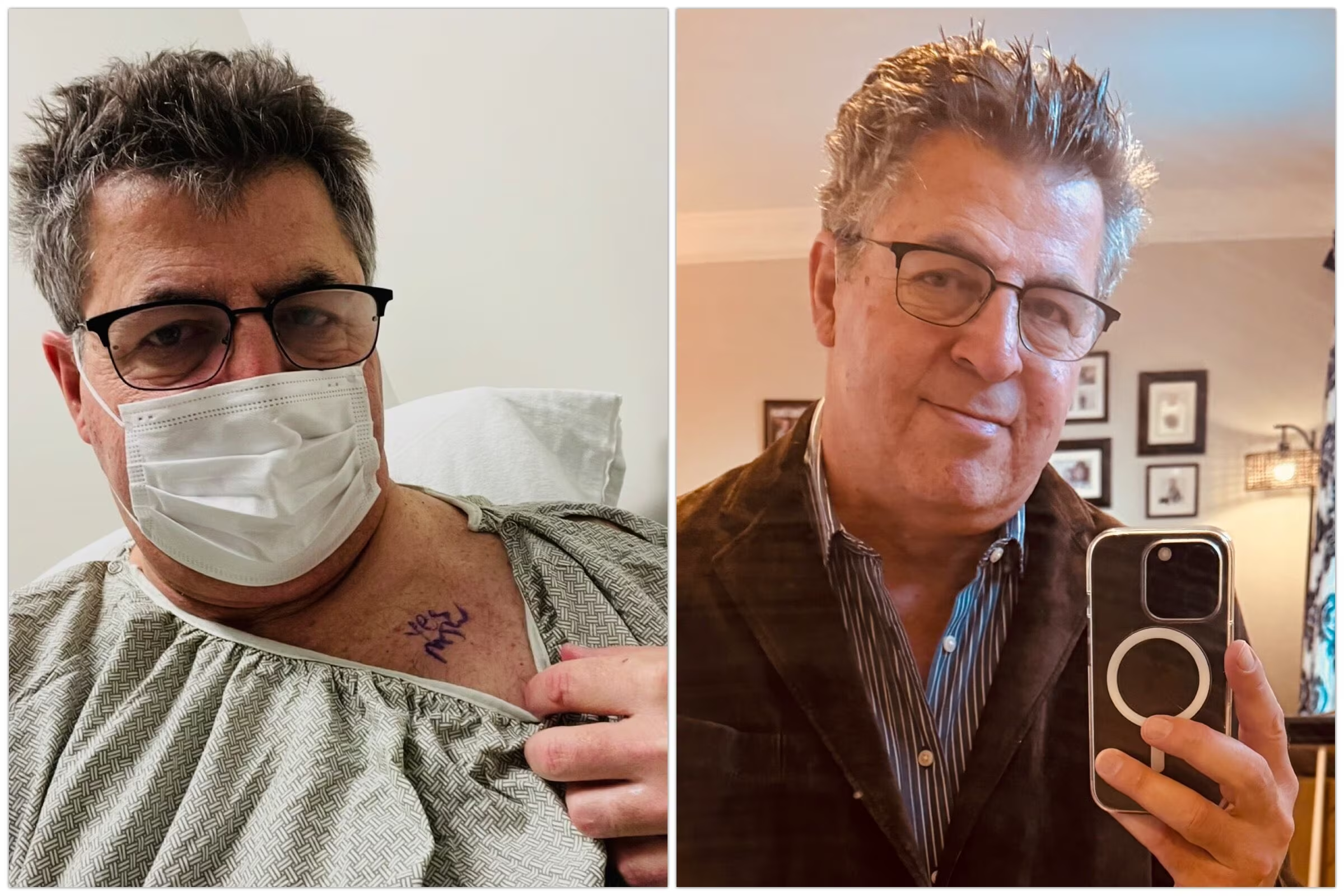Three Years Later: WTOP Journalist Neal Augenstein’s Journey with Chronic Cancer
In late 2025, veteran WTOP journalist Neal Augenstein marks a significant milestone: three years since his diagnosis with Stage 4 non-small cell lung cancer (NSCLC). His journey has become a powerful case study in the advancements of precision oncology, demonstrating how targeted therapies are transforming previously terminal diagnoses into manageable, chronic conditions.
Augenstein’s experience, which began just before Thanksgiving 2022, highlights a fundamental shift in perspective—moving away from the language of “fighting” cancer toward the reality of “living” with it as a long-term disease requiring continuous management.
The Power of Precision Medicine: Targeting the EGFR Mutation
Augenstein’s initial prognosis, Stage 4 NSCLC, is typically aggressive. However, his treatment path was immediately guided by a crucial discovery: his cancer was driven by the Epidermal Growth Factor Receptor (EGFR) mutation. This specific genetic marker allowed doctors to bypass traditional, broad-spectrum chemotherapy and utilize highly effective targeted therapy drugs, known as tyrosine kinase inhibitors (TKIs).

Within six months of starting the initial targeted therapy regimen, Augenstein saw “great results.” This rapid and positive response is characteristic of how effective precision medicine can be when a clear genetic driver is identified. These drugs work by blocking the signaling pathways that the cancer cells use to grow and divide, essentially starving the tumor.
Understanding EGFR-Positive NSCLC
NSCLC is the most common type of lung cancer, and the EGFR mutation is one of the most frequently identified actionable mutations, particularly in patients who have never smoked. The presence of this mutation is critical because it dictates the use of TKIs, which offer significantly better outcomes and quality of life compared to standard cytotoxic treatments.
While initial results were promising, Stage 4 cancer is characterized by its ability to adapt and spread. In the summer of 2023, Augenstein faced a major setback when the cancer progressed to his brain. This is a common challenge in EGFR-positive lung cancer, as many first and second-generation TKIs struggle to cross the blood-brain barrier effectively.
This progression necessitated a change in strategy, combining systemic drug therapy with focused radiation:
- Stereotactic Radiosurgery (SRS): Instead of whole-brain radiation, Augenstein received SRS, a non-surgical procedure that delivers high doses of radiation precisely to the tumors while sparing surrounding healthy brain tissue. This highly focused approach was successful in eliminating the brain tumors.
- Drug Switch: Following the localized treatment, doctors transitioned him to a third-generation targeted therapy drug. These newer TKIs are specifically designed to be more potent against resistant cancer cells and often have better penetration into the central nervous system, helping to prevent future brain metastases.

Life on Third-Generation Therapy: Managing Chronic Side Effects
As of late 2025, Augenstein continues to manage his disease with the third-generation targeted drug. While the drug is keeping the cancer stable, it is not without its costs. Living with chronic cancer treatment means constantly navigating side effects that impact daily life.
Augenstein reports dealing with significant side effects, including:
- Persistent Fatigue: A common and often debilitating side effect of long-term systemic therapy.
- Skin Issues: Including rash and dry skin, which are typical dermatological manifestations of EGFR inhibitors, reflecting the drug’s interaction with EGFR in healthy skin cells.
Despite these challenges, his focus remains firmly on maintaining a high quality of life. He continues his work as a journalist and enjoys traveling, demonstrating the goal of modern oncology: extending life while preserving normalcy.
“The focus has shifted from the immediate crisis of fighting for survival to the long-term reality of living with a chronic disease,” Augenstein noted, reflecting the current paradigm in advanced cancer care.
Key Takeaways for Patients and Caregivers
Augenstein’s three-year milestone offers critical insights into the current state of advanced NSCLC care, particularly for those with actionable mutations:
- Genetic Testing is Paramount: Identifying specific mutations like EGFR is the first and most crucial step, unlocking access to highly effective targeted therapies.
- Progression is Expected, Not Fatal: Cancer cells often develop resistance. The availability of multiple generations of targeted drugs (first, second, and third-generation TKIs) means that treatment plans can be successfully sequenced and adapted over time.
- Quality of Life is Central: Modern treatment protocols prioritize managing side effects to ensure patients can continue to work, travel, and live fulfilling lives, treating cancer more like diabetes or heart disease.
- The Brain Barrier Challenge: Metastases to the brain are common, but highly precise techniques like SRS offer effective, localized control, often allowing patients to remain on their systemic therapy.
The Future of Living with Stage 4 Lung Cancer
Neal Augenstein’s continued success underscores the rapid progress in oncology. For patients diagnosed with Stage 4 NSCLC in 2025, the prognosis is vastly different than it was even a decade ago. The combination of early detection, comprehensive genomic profiling, and sequential targeted therapies has dramatically extended survival rates and improved the daily reality for thousands of patients.
His ongoing commitment to sharing his story not only provides personal context to his listeners but also serves as an invaluable resource, demystifying complex medical treatments and offering hope that Stage 4 cancer can, increasingly, be managed as a chronic, long-term condition.
Original author: Neal Augenstein
Originally published: November 22, 2025
Editorial note: Our team reviewed and enhanced this coverage with AI-assisted tools and human editing to add helpful context while preserving verified facts and quotations from the original source.
We encourage you to consult the publisher above for the complete report and to reach out if you spot inaccuracies or compliance concerns.

